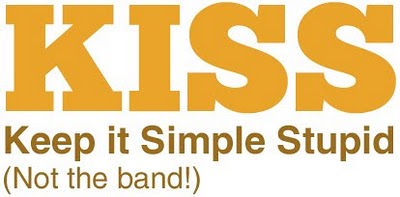
When it comes to writing great website copy, there's a lot to cover, but in lieu of the main lesson here, I'll keep it short and sweet.
The well-known KISS adage holds true more than ever on the Web. Let's face it. Web users are impatient, and grow increasingly so as the years pass. If you're lucky (and I mean really lucky), you'll get 3-8 seconds to grab their attention. That's because users don't read Web pages word-by-word. They scan.
If you perform a simple usability test, watch over someone's shoulder as they browse the Web or pay attention to your own personal habits, it's pretty obvious we've evolved into scanners. We're impatient, and ready to move on. We want the meat, and want it as soon as humanly possible. As a result, important website copy needs to hit hard and hit fast. It needs to be scannable, and there are a few good ways to accomplish this:
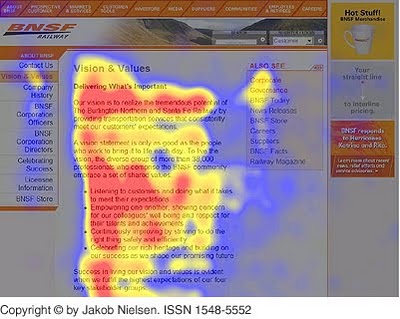 If you look at Jakob Nielsen's article on how we read Web copy, you'll see eyetracking visualizations show users often read Web pages in an F-shaped pattern – two horizontal stripes followed by a vertical one.
If you look at Jakob Nielsen's article on how we read Web copy, you'll see eyetracking visualizations show users often read Web pages in an F-shaped pattern – two horizontal stripes followed by a vertical one.
F – for fast. That's how users consume your precious content. In a few seconds, their eyes move at amazing speeds across your website's words in a pattern that's very different from what you learned in school. Need proof? Check out some eyetracking study heat maps.
As the Internet has become more a part of our everyday life, some new words have made their way into our vernacular that we don't quite know what to do with in our copy. How should we spell them? What's commonplace knowledge and what isn't?
A great reference book every copywriter should have is the "Associated Press Stylebook." Stylebooks are generally released on an annual basis, and the AP's now has a dedicated section for style rules to use for Web terminology. Have you noticed how I capitalize "Web" and "Internet," but not "website?" I can thank my stylebook for that.
Regardless of what role we play in the Web design process, one thing we all need to be aware of is search engine optimization. For copywriters, it's very important to keep in mind that search engines are sifting through a website's content and looking for keywords and phrases relevant to that business. So, before you commit a keystroke to your site, make sure you start with a keyword strategy.
Work with your online marketing team (or study your site's analytics if you don't have one) to determine what keywords are important to for search listing rankings, then try to integrate these as best as possible into the content of your site. The copy should still be relevant and make sense to a human, but tossing in relevant keywords when it makes sense will help with your search engine placement.
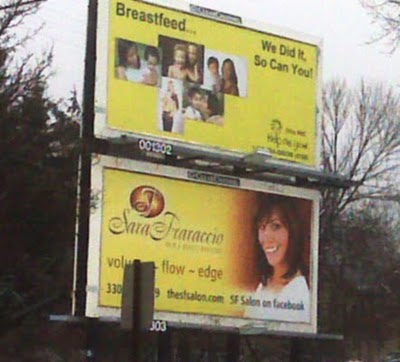 Two weeks ago, I noticed this billboard that caught my eye for several reasons. This is a good case of billboard advertising gone wrong. At first glance, some of the issues may seem obvious, but let's think about what's really going on here. What's really wrong with this picture?
Two weeks ago, I noticed this billboard that caught my eye for several reasons. This is a good case of billboard advertising gone wrong. At first glance, some of the issues may seem obvious, but let's think about what's really going on here. What's really wrong with this picture?
It's a two-in-one. While it's not extraordinarily rare to see stacked billboards, this is one of a few locations for Clear Channel billboard advertising where this is the case. There are a number of general rules to follow when designing single billboard advertisements that a passing driver can consume. Now a driver is being asked to consider two, which may not be so bad if ...
Both billboards weren't using a yellow background. Yikes! But, to be fair, maybe they're advertising the same thing. Oh, wait ...
They're not. One billboard is for breast feeding. The other billboard is for a hair salon. Let's see. So we have two, stacked billboards that are using yellow backgrounds and advertising completely different things. The more I look at it, the more it seems like ...
These billboards start to run together. Wait, is this really one ad? Is the hair salon offering a spot for breast feeding? Probably not, but you can see where this is going.
It seems like we've identified some serious issues here. Serious issues that are easily avoidable.
If you happen to purchase space where two billboards are stacked on top of each other, ask to see the art for the other board. You're spending a good fortune for them, and Clear Channel should be able to give you information on the other board.
Always, and I mean always, travel to the site where your billboards are located, and make sure everything looks as it should. Look at this practice as your quality assurance check.
The last question we need to answer is, who's at fault here? Clear Channel? Nope. In the end, it's the buyer's responsibility to check out what's being purchased. If I owned this hair salon, I'd certainly have my board taken down and ask for a refund. Just my two cents.
There are many small details, or "lint items," that exist behind the scenes, that can make or break the transition of a newly launched website. 404 error pages are one. 301 redirects are another.
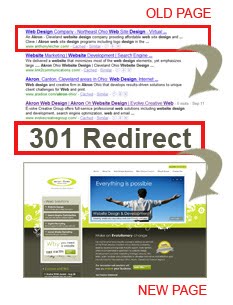 So, what's a 301 redirect? In short, a 301 redirect is a URL redirection, or URL forward. It's a technique used to send a user from an old URL (Web page) to the new one replacing it. 301 redirects are the most efficient and search-engine-friendly method for webpage redirection.
So, what's a 301 redirect? In short, a 301 redirect is a URL redirection, or URL forward. It's a technique used to send a user from an old URL (Web page) to the new one replacing it. 301 redirects are the most efficient and search-engine-friendly method for webpage redirection.
A few benefits of 301s are that they're not that hard to implement and should preserve your established search engine rankings. If you have to change file names or move pages around, it's the safest option. The code "301" is interpreted as "moved permanently".
Depending on how your website is built and what you need to redirect, you may need some technical help on this. I'd recommend calling your Web hosting provider to get details on how to do this on their server, or contact your IT gurus and have them help you out. If you need a solid reference on how to implement these based on the coding language your site is built on, you may want to consider looking at webconfs.com's How to Create A 301 Redirect guide.
It's a no-brainer. Again, it's likely your current Web pages have been indexed by search engines (a good thing). However, if you're going through a redesign, it's likely your site structure, base programming language or page names will change. Keep in mind that one slight change in the URL will create a dead link for your website, and a user will be sent to a 404 error page.
When it comes to search rankings, I'd say most of us don't want to lose any ground on pages indexed by search engines. It takes quite a bit of work to gain the ground your older pages have, and it's not ground you should surrender so willingly. Treat yours like a gold mine. It really is one.
Putting 301 redirects in place for every page or file name that's changing in a transition from an old to new site is how you tell search engines what's new and how to handle the old. Over time, they'll eventually remove the old links from their index and replace them with the updated ones. This is how you hold your ground.
Remember, when you get ready to launch your new website, make sure you have all your bases covered. If you're not sure what your "lint items" are and how to deal with them, it's always best to consult with a Web professional. If you'd like to learn more about creating 301 redirects for your website, contact us today.
According to a study by Frank N. Magid Associates, 77 percent of U.S. Internet users are watching online videos, and 43 percent of them are viewing them on a weekly basis.
Web videos have been around for a while, but this past year, they've really increased in both views and user-generated content uploads. As broadband penetration increases and the ability to easily upload videos to websites or social networks increases, we'll continue to see video content complimenting or flat-out replacing static text on a given Web page. After all, why read when you can watch?
Adding short videos to your website brings another element of content to engage your audience. Web videos add a voice and face to your company, allowing users to connect with you before they even meet you in person. But you need to keep it short and simple – any more than 30-60 seconds and you may lose their attention. Vidyard.com has some great tips on usability studies they've conducted on this subject.
Another great aspect of uploading videos to your website that's often times overlooked is how beneficial these are for search engine optimization (SEO). Google and Yahoo are now indexing these videos, and they can be searched separately. With local geo-targeted keywords, you can earn some great positioning and possible leads. Just be very strategic with the tags and titles you use for your videos. These are the keywords indexed by search engines.
Here are a few ideas for different types of videos to consider adding to your website:
You can learn more about these strategies and view samples on our Video page. Are you ready to add web videos to your website? They're not as expensive as you think. Contact us for more information.
 I've recently finished another great book by Seth Godin entitled "the dip". It's a small book (only 80 pages), but worth the read. Like most of Seth's books, he really tries to get you to think about your life and career.
I've recently finished another great book by Seth Godin entitled "the dip". It's a small book (only 80 pages), but worth the read. Like most of Seth's books, he really tries to get you to think about your life and career.
The subtitle sums it up best: "A little book that teaches you when to quit and when to stick."
I know what you're thinking. "When to quit? I'm not a quitter." Trust me, I thought the same thing. Never quitting was a concept ingrained in me by all of my coaches in life, especially in wrestling. However, this book is more about looking at your life, your career and asking yourself: Am I happy? Am I going forward? Challenged, still learning? Will I be the best in world? If my career or new business is about to hit a "dip" (a rough patch in your journey to be the best) can/will I survive? Is it even worth it? Is it better to redirect my energy and skills to something new?
Ironically, I ended up doing what the book recommended a year ago – before I bought and read it. However, it was nice to get the reassurance I made the right choices. Of course, while no book forces you to do anything, it's helpful to see others are going through the exact same things (and write books about them). I hit a dip last year, and as a result, started Evolve Creative Group this year. It's turning out to be the best decision I've ever made. Will I be the best in the world? You better believe I'll do everything in my power to be. And if not the world, at least the best in Akron, Ohio.
In this economic climate, I think this book is a must-read for those who are hitting a dip, or rough patch, in their lives/careers. Now's the time to reflect and make some changes. It sounds very cliché but true. Life is short, and we work too hard to not enjoy what we're doing every day. My recommendation: Get up every morning and be excited. Make a difference.
If you're interesting in learning more about when to quit and when to stick, you can buy this book on Amazon.com.
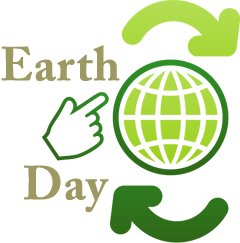 Many of us believed the inception of the PC and the Internet would help us cut down on our waste and paper products. However, as we quickly found out, this was not the case. In fact, in most cases, it's created more.
Many of us believed the inception of the PC and the Internet would help us cut down on our waste and paper products. However, as we quickly found out, this was not the case. In fact, in most cases, it's created more.
How many times have you printed off an email or Web page to find out that two-to-three extra pages of senseless garbage prints out as well? Many people would still rather print an article rather than read it online and/or store in a tidy folder on their PCs. To be fair, I'm a victim to this habit as well, but I think it's one of many things we should all try to think about when considering how we can best eliminate some of this useless waste in the course of our nine-to-five.
Here a few things to keep in mind while working on making your online marketing activities more eco-friendly.
Instead of creating an expensive annual report for your organization, create an online, interactive version instead. You'll save money and paper while creating an interactive experience that could be 10 times more interesting than a printed version.
In some places, it's still common for newsletters to make their way to you via your physical mailbox instead of your online one. Take advantage of the online channel and send email versions. It's not only a very cost-effective way to communicate with you consumers or constituents, but can be a major force in and driving traffic to your website. Consider some other benefits:
If you pay close attention to our company's branding, you'll see we love our trees here. As Earth Day approaches, let's all take a little time to look at our business practices and see how we can save a few more of them.
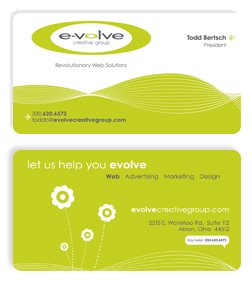 A business card is your first opportunity to tell your story and establish your branding image. Yes, I've been told that many people toss a business card after they've digitally entered it into their email contacts list. However, it's still your first impression, your first or second touch point with a potential client or customer. So make it great. Make it standout. Make it memorable.
A business card is your first opportunity to tell your story and establish your branding image. Yes, I've been told that many people toss a business card after they've digitally entered it into their email contacts list. However, it's still your first impression, your first or second touch point with a potential client or customer. So make it great. Make it standout. Make it memorable.
Creating a successful business card doesn't have to cost a fortune, but it could net you one. A well-designed card will go a long way in making a great impression and helping your brand stand out among the competition.
More than 85 percent of Web users are using search engines to find the products or services they're looking for, but guess how many are using "local search terms?" You'll be surprised by the number.
According to a TMP Directional Marketing Local Search Usage study, 31 percent of consumers are now using search engines as their primary resource for local business information. Combined with IYPs (Internet Yellow Pages) and local search sites such as Google Maps or Yahoo Local, the online channel now accounts for 61 percent of all primary sources of local business information.
While local search isn't an entirely brand new technology, more users are starting to embrace it, and are searching with local terms in their keyword search both on desktops and mobile devices. Take a look at your analytics, and I bet you'll see some of your referred visitors are from local search. If not, then it's time to get going.
Why not? It's (mostly) free, after all, and within minutes you can sign up, add your business listing and be on your way to getting listed. The approval process for major search engines like Google vary, but it's worth the wait.
If you have an older website with some Web history, your site may have already been indexed by local search engines, but don't trust search engines to get your listing correct. You can "claim" your business listing and add additional information about your products, services, hours, reviews and even photos. It's like getting a FREE Yellow Pages ad.
Mary Bowling of the ClickZ network published a great article informing small businesses about some great (mostly free) tools for checking your listings. The best part is it's free with no sign up required. What a concept.
Local search is growing rapidly, and it's here to stay. This is definitely a trend that can significantly help the growth of your business locally, and can provide you with opportunities to reach every customer located within the zip code areas you service at little or no cost. So what are you waiting for? Get local today.
Would you like to learn more about getting your business listed in local search engines? Give us a call today, and we'll walk you through it.